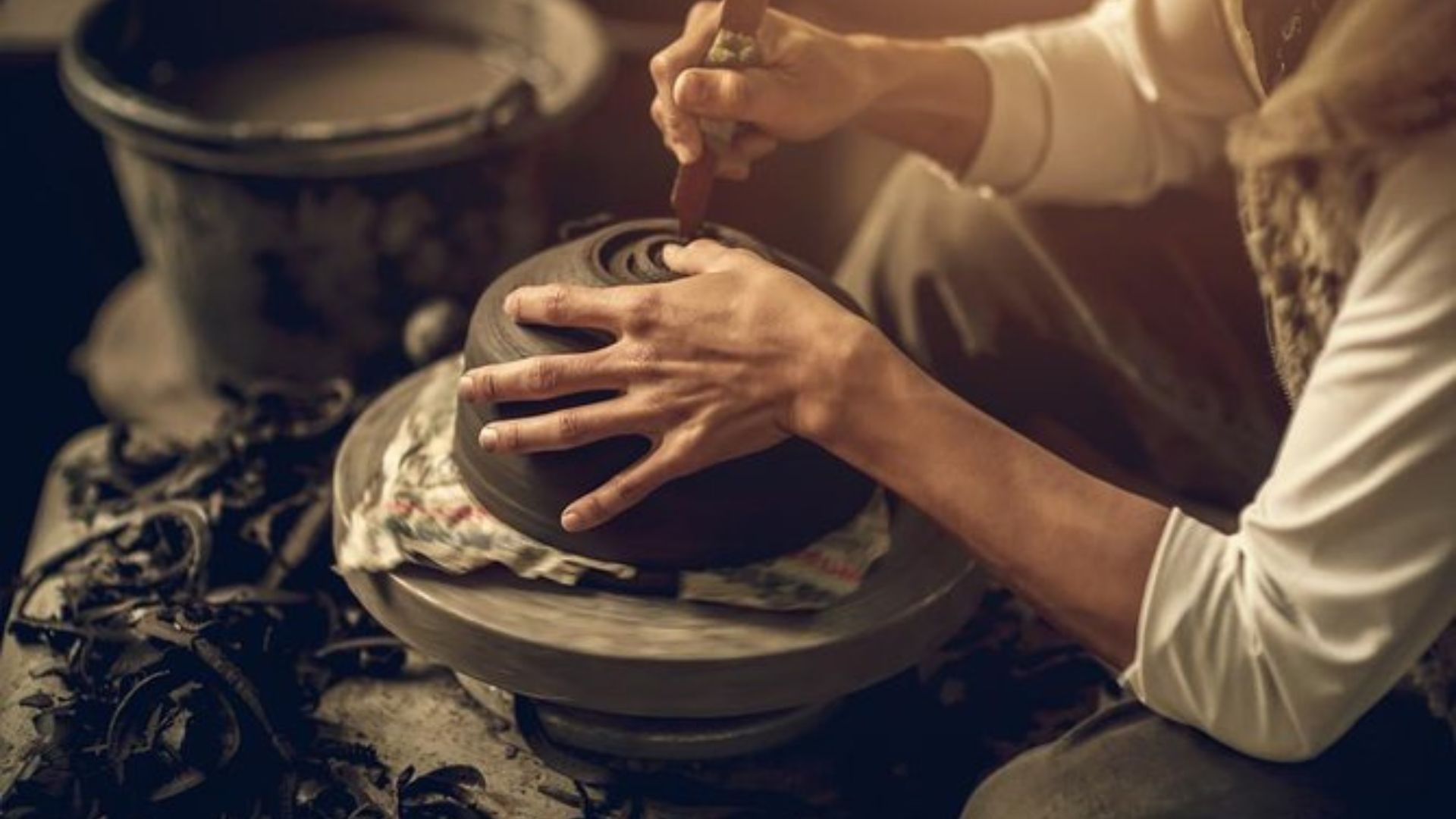


Empowering crafters and artists from backward communities, forest dwellers (especially PVTGs), and indigenous communities for the larger development of India has been an important component of the vision that the Modi government has been working on assiduously for a long time. There are several pro-Weaver steps that have been taken by Modi’s government, which readers will get to know in some detail in the latter part of this article. Those scholars, designers, and public policy students who want to learn about the development of weaving communities in India should definitely study the ‘Chanderi Model’ that was executed by Maharaja Madho Rao Scindia before 1947 for the development of weavers, and this article is an effort in that direction.
Chanderi Weavers
Long time ago, a small tehsil in Central India, now part of Ashoknagar district (which in turn is part of Guna Lok Sabha constituency), known as Chanderi, migrated Koshti weavers from Jhansi around 1350 and began the Chanderi sari tradition, according to the National Integrated Database of Hospitality Industry (NIDHI) of the Ministry of Tourism (Government of India), but the weaving culture of Chanderi is far older; it emerged between the second and seventh centuries, according to the same source. The Ain-e-Akbari, written by Abul Fazl during Mughal emperor Akbar’s reign, talks about the fine weaves of Chanderi.
According to Madhya Pradesh tourism “The traditional Chanderi fabric is known for its sheer and lightweight texture. There are three types of fabrics weaved in the town of Chanderi: pure silk, silk cotton, and Chanderi cotton. The popular and elegant handwoven motifs include keri (raw mango), ashrafi (coin), peacocks, an flowers, to name a few.”
The success story of Chanderi has had an important role for the Scindia family, an erstwhile prominent royal family of India that ruled a 21-gun salute princely state, namely Gwalior State. Chanderi weaving was patronised by the Scindias, and the products of the Chanderi looms were used for awards like Poshak, which were made in the Scindias’ Durbar. Maharaja Madho Rao Scindia developed a market for clothes in Chanderi, and a textile institute was built at Chanderi. When we read the Census Report of the Gwalior State of the year 1913, we find the textile industry alone gave employment to no less than 77,380 persons in the state (this number included dependents).
Govila Report
Madho Rao Scindia, the great-grandfather of Jyotiraditya M. Scindia, played an important role in executing the ‘Chanderi Model’ of the development of weavers. Scindia’s zeal for the regeneration of indigenous industries is now proverbial. He saw that if the weaving industry was to be materially improved, a great deal had to be done, not merely in connection with the technical details of the weaving processes but also in connection with the training and education of the weaver himself.
The idea of formulating a definite scheme that could help Maharaja Scindia’s government solve the serious problems affecting the lot of the weaver had presented itself to Madho Rao Scindia. Orders were passed by his government for the survey of the industry. Lala Babulal Govila, ‘Textile Engineer (Tokio), was asked to take the work in hand and submit a complete report to Scindia’s government with his recommendations. This was in the year 1909, and after making the necessary inquiries, he submitted his scheme.
Chanderi Model
These recommendations were accepted by Scindia’s government in full, and the creation of an Institute of Textile Technology at Chanderi with a Textile Store attached to it was sanctioned, and the execution of the scheme was entrusted to Mr. Govila. In about a year’s time, two magnificent buildings at Chanderi were adapted for housing these two institutions, and they were equipped with the most modern appliances.
A complete change had come over the Chanderi fine muslin industry in just four years. Designs that had almost become monotonous in solid bordered cloths had given way to new pleasing designs in a variety of colours. Jacquard contrivance had been introduced for facilitating ornamental work; weavers used to handle rough counts had taken to hand looms of improved type; the artisan’s skill had been relieved of tedious labour by labour-saving devices; and the display of originality in designing. Scholarships had been instituted to encourage educated young men to receive training in the theory and practice of this important science so that they might help the weavers in other centres of Scindia›s state.
Modi Era
What Maharaja Madho Rao Scindia did at a micro scale in Chanderi, then, Prime Minister Narendra Modi is doing at a macro scale, at an all-India level. Take, for example, the PM Vishwakarma scheme, which is a central sector scheme and was launched on September 17, 2023, by the Prime Minister himself, to provide end-to-end support to artisans and craftspeople who work with their hands and tools.
Handholding support is being provided to the Khadi Institutions and Village Industries Units for availing financial assistance from the banks under the schemes, namely, the Prime Minister’s Employment Generation Programme (PMEGP) and the Scheme of Fund for Regeneration of Traditional Industries (SFURTI). The development of craft clusters and women in crafts has been prioritised on the agenda of the Modi government.
While addressing the audience at New Delhi’s Pragati Maidan, during the National Handloom Day celebrations on August 7, 2024, Mr. Modi said, “The India of today is not just ‘Local for Vocal’ but also providing a global platform to take it to the world.” He launched Bhartiya Vastra evam Shilpa Kosh, A Craft Repository Portal of Textiles and Crafts, and Ekta Mall, which is being developed in every capital city of the states by the government to promote handicrafts and products made from handlooms from every state and district under one roof. Indeed, Mr. Modi has taken tremendous steps to improve the conditions of weavers in India. Let’s hope that this story of weaving welfare continues.